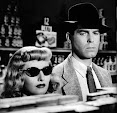I've just finished George Hawley's, Right Wing Critics of American Conservatism and would like to say that this is a really good book. Its main emphasis is on non-mainstream American Conservatism post WW2 with some mention of pre-War thinkers. It covers a lot of ground, and it covers it succinctly. Most of all it gives, each of the movements, I feel, a fair hearing and accurate rendition of their main personalities and ideas. I think anyone looking to get a good broad overview of the subject would not go wrong with this book.
But I think the book is also valuable for Hawley's own input into the subject matter since I think his survey quite accurately identifies several problems which still beset "the Right".
What's becomes apparent upon reading the book, is that the non-mainstream Right is composed of various disparate groups whose philosophical positions are sometimes contradictory and incompatible. So Hawley's first problem is how to define the common doctrinal tenet in all these groups. Hawley comes to the conclusion that what separates the Right form the Left is the Right's rejection of the notion of equality, a notion which is the central tenet of the Left. Personally, I've got a couple of problems with this approach. Firstly, I think it a too superficial analysis which leads one to the conclusion that the battle between Left and Right is a battle between the preference for equality or its opposite.
Secondly, it does tend to put together, "under one tent" groups which are otherwise intrinsically opposed to one another. Paleoconservatives and American Nazi's are both considered right wing, yet both have visions which are incompatible with each other. This has been a fundamental problem which I feel has seriously hampered the Right in its ability to combat the Left.
As things stand, membership of the Right Club seems to be premised on the notion of being anti-Left. In other words, it's a reactionary anti thesis to the Left's ideas. This, of course, "frames" the right in Leftist terms and cripples the Right by allowing any idiot who is opposed to the Left, no matter how stupid the reason, into the Club. A great example of this are the National Socialists, who get lumped as Right wing despite the fact that their ideological heritage is more in common with socialism and the French Revolution than with Burke.
Pragmatically, what this means is that the Right is frequently allied with forces which turn against it at a critical moment, stabbing it in the back, the Neocon revolt against Trump being an example of this. (Many of whom voted for Hillary).
The membership problem needs to be resolved.
The other issue that Hawley identifies in his survey is the gradual decline in highbrow conservative publications and thought. It sad fact that the public space has been seriously dumbed down but do I think he is onto something here. However, given the dramatic rise of the internet, most of the good stuff is happening on-on line. But as Hawley notes, most public discussion when it comes to conservative issues is done through the shock jocks and media presenters and he laments that there has been a decline in the quality of public space Conservative thought.
Still, I think he missed what I regard as the greatest new development in Conservative thought--the Manosphere--and totally underestimated its significance. The manosphere, as far as I'm concerned, is the only area where conservative thinking is quite alive and active at the moment. The sexual dystopia that we live in has, in many ways, been abetted by traditional western thought. Poisoning Eros did not just reduce lust but it also neutered sexual polarity and fueled the feminist revolution. When sexual identity is defined by moral virtue instead of erotic ones, the biological nature of the actor sort of becomes irrelevant and split is unintentionally encouraged between biological fact and human actor. The Manosphere is a corrective to this thought since it teaches that biomechanics puts real limits on sexual polarity.
Overall, I think, his charge is justified. Neoreaction--at least to me--seems to have stalled for the moment and I think and more active presence would be a corrective to this dearth of new ideas.
Finally, Hawley points to the demographic challenges facing Conservatism. Hawley notes that the vehicle for Conservative values seem to be, by and large, Older White Males. Given the demographic reality we live in and the decline in Conservative values among the young, Hawley paints a bleak picture of Conservatism's future.
As said before, it's a good book which gives a good and easily readable survey of post World War Two non mainstream conservatism. Thoroughly recommend it. Five Stars.
Tuesday, November 22, 2016
Subscribe to:
Comments (Atom)

